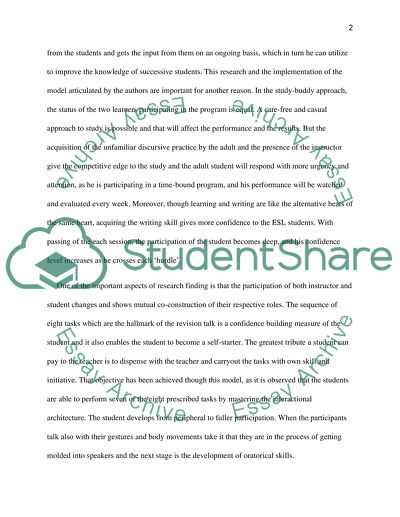Learning as Changing Participation: Discourse Roles in ESL Writing Article. Retrieved from https://studentshare.org/english/1480570-learning-as-changing-participation-discourse-roles-in-esl-writing-conferences
Learning As Changing Participation: Discourse Roles in ESL Writing Article. https://studentshare.org/english/1480570-learning-as-changing-participation-discourse-roles-in-esl-writing-conferences.


